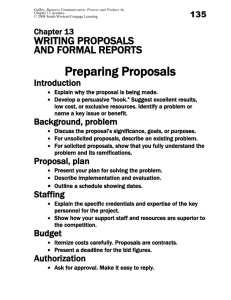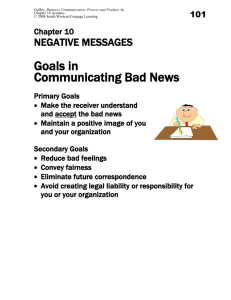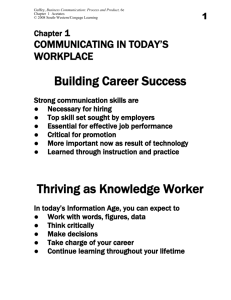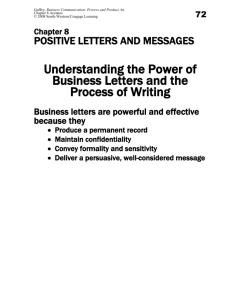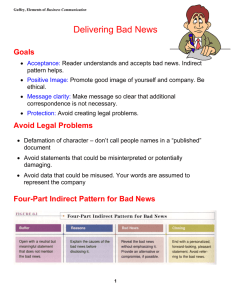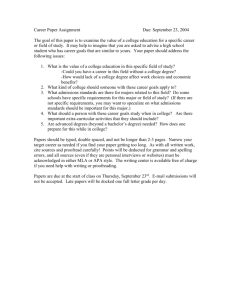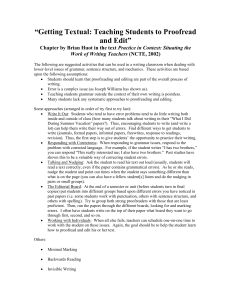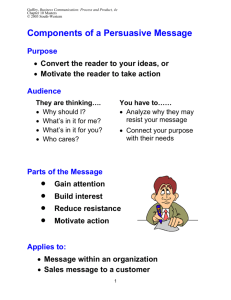Chapter 6
advertisement
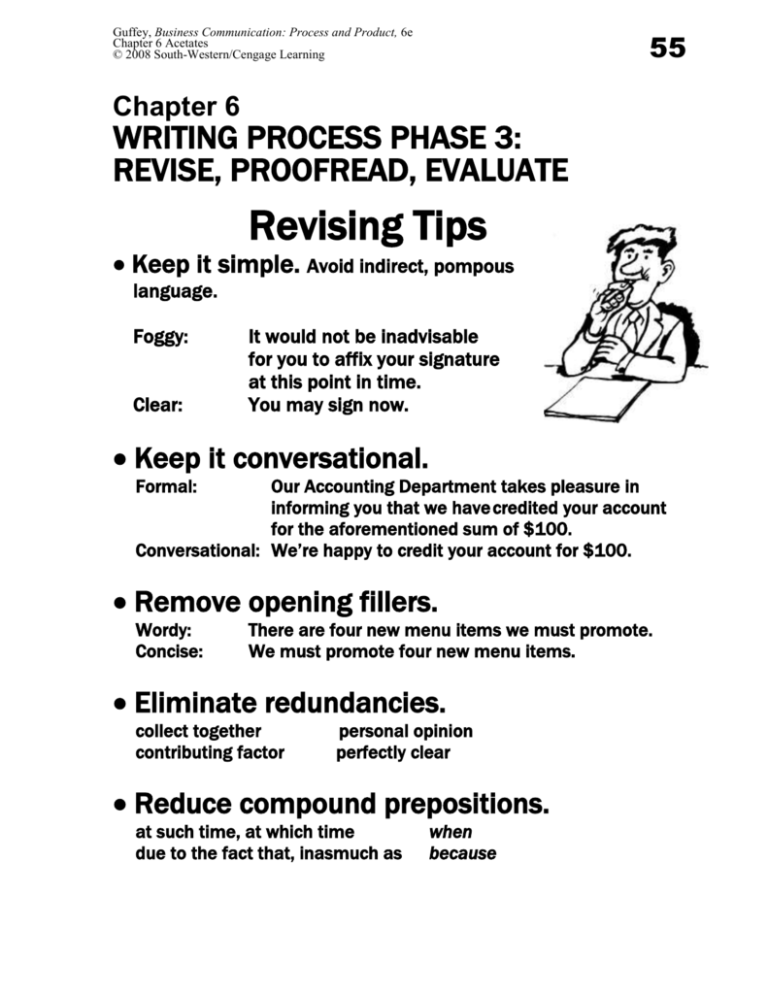
55 Guffey, Business Communication: Process and Product, 6e Chapter 6 Acetates © 2008 South-Western/Cengage Learning Chapter 6 WRITING PROCESS PHASE 3: REVISE, PROOFREAD, EVALUATE Revising Tips Keep it simple. Avoid indirect, pompous language. Foggy: Clear: It would not be inadvisable for you to affix your signature at this point in time. You may sign now. Keep it conversational. Formal: Our Accounting Department takes pleasure in informing you that we have credited your account for the aforementioned sum of $100. Conversational: We’re happy to credit your account for $100. Remove opening fillers. Wordy: Concise: There are four new menu items we must promote. We must promote four new menu items. Eliminate redundancies. collect together contributing factor personal opinion perfectly clear Reduce compound prepositions. at such time, at which time due to the fact that, inasmuch as when because 56 Guffey, Business Communication: Process and Product, 6e Chapter 6 Acetates © 2008 South-Western/Cengage Learning Revising tips (cont.) Purge empty words. As for the field of athletic shoes, the degree of profits sagged. This is to inform you that we have a toll-free service line. Kick the noun habit. conduct an investigation of give consideration to make a decision about investigate consider decide Dump trite “business” phrases. as per your suggestion pursuant to your request enclosed please find as you suggested as you requested enclosed is Develop parallel (balanced) expression. Not parallel: Parallel: We can collect information, store it, and it can also be updated. We can collect, store, and update information. Apply graphic highlighting. Letters, such as (a) and (b) within the text Numerals, such as 1, 2, and 3, listed vertically Headings, bullets Capital letters, underscores, boldface, italics, font size (What kinds of graphic highlighting have you seen on these transparencies? How does it improve readability?) Consider measuring readability. Apply a readability test such as Gunning’s Fog Index. Guffey, Business Communication: Process and Product, 6e Chapter 6 Acetates © 2008 South-Western/Cengage Learning 57 Proofreading What to watch for in proofreading Spelling Grammar Punctuation Names and numbers Format How to proofread routine documents For computer messages, read on the screen or, even better, print a rough copy to read. Look for typos, misspellings, easily confused words. Study for inconsistencies and ambiguous expressions. Look for factual errors. How to proofread complex documents Print a copy, preferably double-spaced. Set it aside and take a breather. Allow adequate time for careful proofreading. Be prepared to find errors. Congratulate, not criticize, yourself each time you find an error! Read the message at least twice—once for meaning and once for grammar/mechanics. Reduce your reading speed. Focus on individual words. Evaluating How successful will this communication be? Does the message say what you want it to? Did you encourage feedback so that you will know its success? Guffey, Business Communication: Process and Product, 6e Chapter 6 Acetates © 2008 South-Western/Cengage Learning Basic Proofreading Marks 58
